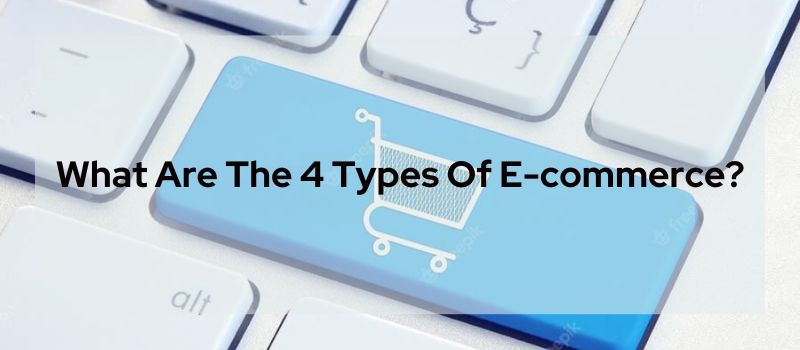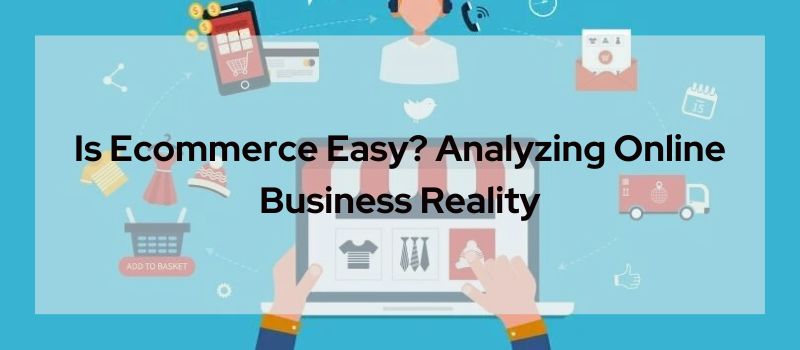Introduction to E-Business and E-Commerce is the whole guide in which we are going to discuss models, growth, differences, and much more. The internet has revolutionized the way companies do business. With the rise of e-business and e-commerce, businesses now have unprecedented opportunities to reach new customers, operate more efficiently, and adapt to the digital landscape.
However, with these new opportunities also come risks and challenges that require careful consideration. In this post, we will explore the key components of e-business, the benefits and challenges it presents, and what the future may hold for these transformative technologies.
Contents
- 1 Introduction To E-Business and E-Commerce
- 2 The Rapid Growth of E-Commerce
- 3 Difference between E-commerce and E-Business
- 4 Key Components of E-Business
- 5 E-Commerce Business Models
- 6 Benefits of E-Business and E-Commerce
- 7 Challenges of E-Business
- 8 The Future of E-Business and E-Commerce
- 9 FAQ’s
- 9.1 Q1: What is the difference between e-business and e-commerce?
- 9.2 Q2: How fast is e-commerce growing globally?
- 9.3 Q3: What are some key technologies used in e-business?
- 9.4 Q4: What are some challenges companies face with e-business?
- 9.5 Q5: How might emerging technologies impact the future of e-commerce?
- 10 Conclusion:
Introduction To E-Business and E-Commerce
E-business refers broadly to any business activities conducted online or using information technology to improve business processes. This includes activities like online marketing, electronic payment processing, inventory management software, and more. E-commerce specifically focuses on online transactions – the buying and selling of goods and services through the internet.
E-business incorporates e-commerce along with all other electronically enabled business operations. A company can engage in e-business even if it does not sell products directly to consumers online. On the other hand, e-commerce represents a segment of e-business models focused strictly on online sales and transactions between businesses, consumers, or both.
The Rapid Growth of E-Commerce
The rise of the internet has enabled businesses to establish an online presence and connect with customers globally in ways never before possible. E-commerce has grown exponentially as online shopping provides unprecedented convenience, selection, and competitive pricing for consumers.
In the US, e-commerce sales have grown from just 0.6% of total retail sales in 1999 to over 11% today. Globally, e-commerce sales exceeded $2.3 trillion in 2017. Industry experts project e-commerce to continue this rapid growth, potentially accounting for 17% of all retail sales by 2022. The COVID-19 pandemic has further accelerated the adoption of online shopping. As consumers move more activities online, businesses must adapt quickly to digital platforms to stay relevant.
Difference between E-commerce and E-Business
| E-commerce | E-Business |
|---|---|
| A broader term encompassing all electronically mediated business transactions and activities. | Covers any processes a business conducts over the Internet. |
| Involves online transactions and payments between businesses, consumers, or both. | Includes eCommerce along with online marketing, servicing customers, processing payments, etc. |
| Mainly concerns retail transactions for physical goods or digital products. | The main focus is providing a convenient online purchasing experience. |
| Primary participants are merchants and customers. | Involves interactions between all business stakeholders. |
| Main focus is providing a convenient online purchasing experience. | Aims to enhance overall business operations and productivity using internet technologies. |
| Revenue comes from sales commissions or transaction fees. | Revenue earned comes from overall business operations. |
Key Components of E-Business
Several foundational technologies and components enable businesses to operate online:
1. Websites
Company websites establish an online presence, communicate the brand identity and story, showcase products and services, and engage customers. Well-designed sites that are mobile-friendly and easy to navigate help build trust and convert visitors to customers.
2. Online Transactions
Online payment gateways and shopping cart systems allow customers to conveniently purchase products through secure online checkout processes. Tools like PayPal, Shopify, and Stripe facilitate online transactions and integrate with company websites.
3. Supply Chain Management
Businesses can use supply chain management (SCM) software to optimize their relationships with suppliers, coordinate manufacturing operations, manage inventory, and deliver products in a streamlined fashion. Technology enhances supply chain efficiency.
4. Customer Relationship Management
Customer relationship management (CRM) software compiles customer data across engagement channels to understand preferences and behaviors. This data powers personalized experiences, marketing campaigns, and tailored promotions to drive loyalty.

E-Commerce Business Models
There are several distinct e-commerce models that serve different business needs:
- B2C (Business-to-Consumer)
- B2B (Business-to-Business)
- C2C (Consumer-to-Consumer)
- C2B (Consumer-to-Business)
- B2G (Business-to-Government)
- G2C (Government-to-Citizen)
- G2B (Government-to-Business)
- G2G (Government-to-Government)
1. B2C (Business-to-Consumer):
This is the most common model where businesses sell products directly to consumers through their own e-commerce platforms and retail websites. Examples include online stores like Amazon, Walmart.com, Apple.com etc. They showcase and sell their products directly to customers.
2. B2B (Business-to-Business):
Businesses provide services or sell products to other businesses. For example, Alibaba.com enables manufacturers to connect with wholesalers. IBM provides cloud computing services to other companies. A digital marketing agency sells its services to clients.
3. C2C (Consumer-to-Consumer):
This model facilitates consumers selling products or services to other consumers. EBay is a popular example where individual sellers list products that buyers can bid on and purchase. Other sites like Craigslist, Etsy, and Wallapop enable direct C2C transactions.
4. C2B (Consumer-to-Business):
In this model, consumers sell products or services to businesses. For example, artists and designers might sell creative work like logos, illustrations, or templates to companies on platforms like Fiverr, 99Designs, and Canva. Bloggers can sell articles and content to publishers.
5. B2G (Business-to-Government):
Here businesses sell products and services to government agencies and public institutions. For example, a technology company may provide cloud computing services or customized software to government departments. Defense contractors sell equipment to the military.
6. G2C (Government-to-Citizen):
This model involves government entities providing services, information or products directly to citizens. For example, postal services, motor vehicle registration, public records access, tax payment portals, and more.
7. G2B (Government-to-Business):
Government entities provide services, information or products to businesses. Examples include business licenses, tenders, public infrastructure used by companies like roads, market data, and information on regulations.
8. G2G (Government-to-Government):
G2G models involve government entities sharing information and services with each other. This can include data on criminals and security threats, policy coordination, intra-governmental process automation, and more.
Benefits of E-Business and E-Commerce
Adopting e-business provides many tangible benefits:
1. Increased Reach
Online channels give companies access to national and international markets that were previously out of reach. Businesses can find and serve customers across wide geographies.
2. Lower Operational Costs
Automating processes through e-business technologies reduces overhead and streamlines operations. Businesses save on costs like brick-and-mortar retail spaces.
3. Improved Efficiency
Better supply chain and inventory management through SCM software also enhances efficiency. Companies can coordinate workflows, access real-time data, and optimize decision making.
4. Better Customer Experiences
CRM systems and customization capabilities enable more personalized and tailored customer experiences. Consumers appreciate engaging and frictionless e-commerce journeys.
Challenges of E-Business
However, e-business also poses some notable risks and difficulties:
1. Security Threats
Online data and transactions are vulnerable to cyber threats like hacking, viruses, and data breaches. Businesses must invest in robust security to maintain customer trust.
2. Legal and Regulatory Compliance
Navigating different laws, restrictions, taxes, and regulations across regions and countries adds complexity for e-businesses operating globally.
3. Logistical Complexities
Fulfilling and shipping online orders accurately and efficiently at scale requires good logistics. This can become exponentially more difficult for global e-commerce.
4. Need for New Skills
Adopting new technologies and digital capabilities requires training employees in areas like data analytics, digital marketing, and online user experience design.
The Future of E-Business and E-Commerce
Despite the challenges, e-business and e-commerce will only continue to grow in importance and ubiquity. Here are some potential developments on the horizon:
1. Global Growth of E-Commerce
Online shopping is projected to keep rising globally, particularly in emerging markets where internet adoption is accelerating. More business will shift online.
2. Emerging Technologies
E-commerce will integrate with cutting-edge innovations like artificial intelligence, virtual reality, drones, and blockchain technology to create immersive and efficient experiences.
3. Omnichannel Retail
Retailers will adopt a blended approach with seamless experiences across online and brick-and-mortar channels tailored to individual customer journeys.
4. Hyper-Personalization
Granular customer data and live interactions will enable e-commerce offerings and experiences to be customized down to the segment-of-one level.
FAQ’s
Q1: What is the difference between e-business and e-commerce?
E-business refers to any business processes or activities conducted online or using information technology, while e-commerce focuses specifically on online transactions like buying and selling goods and services. E-business encompasses e-commerce along with other digital operations.
Q2: How fast is e-commerce growing globally?
E-commerce sales are growing at a very rapid pace globally. Total e-commerce sales exceeded $2.3 trillion in 2017 and are projected to account for 17% of all retail spending by 2022, up from just 10% in 2017. The COVID-19 pandemic has further accelerated the growth and adoption of e-commerce.
Q3: What are some key technologies used in e-business?
Some major technologies that enable e-business include company websites, online payment gateways, supply chain management software, and customer relationship management platforms. These tools help businesses establish an online presence, conduct transactions, manage operations, and analyze customer data.
Q4: What are some challenges companies face with e-business?
Top challenges of e-business include security risks like hacking and data breaches, legal and regulatory issues across different countries and regions, logistical complexities in fulfillment and delivery, and the need to develop new skills relating to digital technologies and online customer experiences.
Q5: How might emerging technologies impact the future of e-commerce?
Experts predict e-commerce will integrate with cutting-edge innovations like artificial intelligence, virtual and augmented reality, advanced robotics, drones, and blockchain technology. These technologies will enable more immersive, efficient, and customized e-commerce experiences.
Conclusion:
Introduction to e-business and e-commerce present amazing opportunities as well as risks. Companies that strategically invest in digital capabilities, strong security, customer experience, and omnichannel operations will thrive in the evolving landscape. The future of business is online.
Read More:
- How Much Does It Cost To Maintain An Ecommerce Website?
- Can A Non-Technical Guy Create An E-commerce Website?
Start Your E-Commerce Business Today: click here



